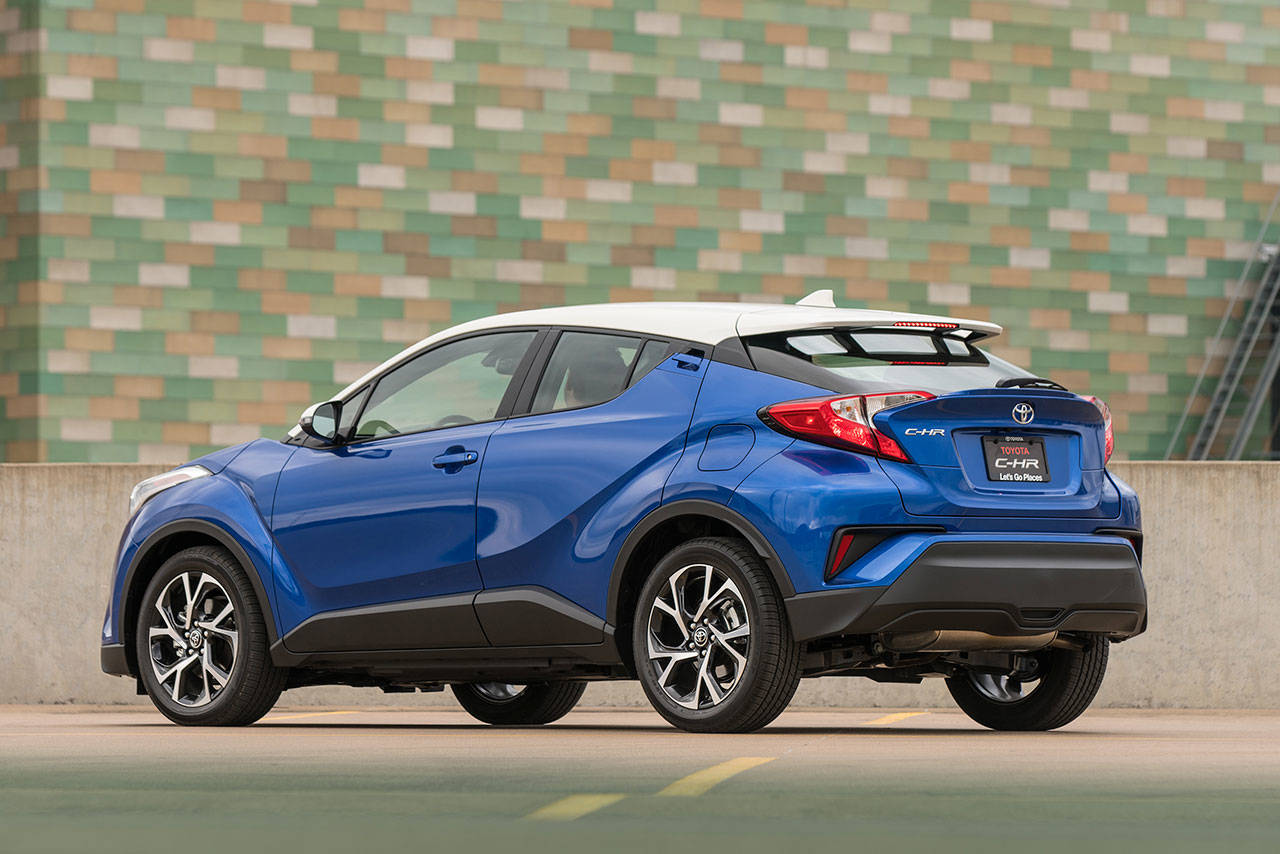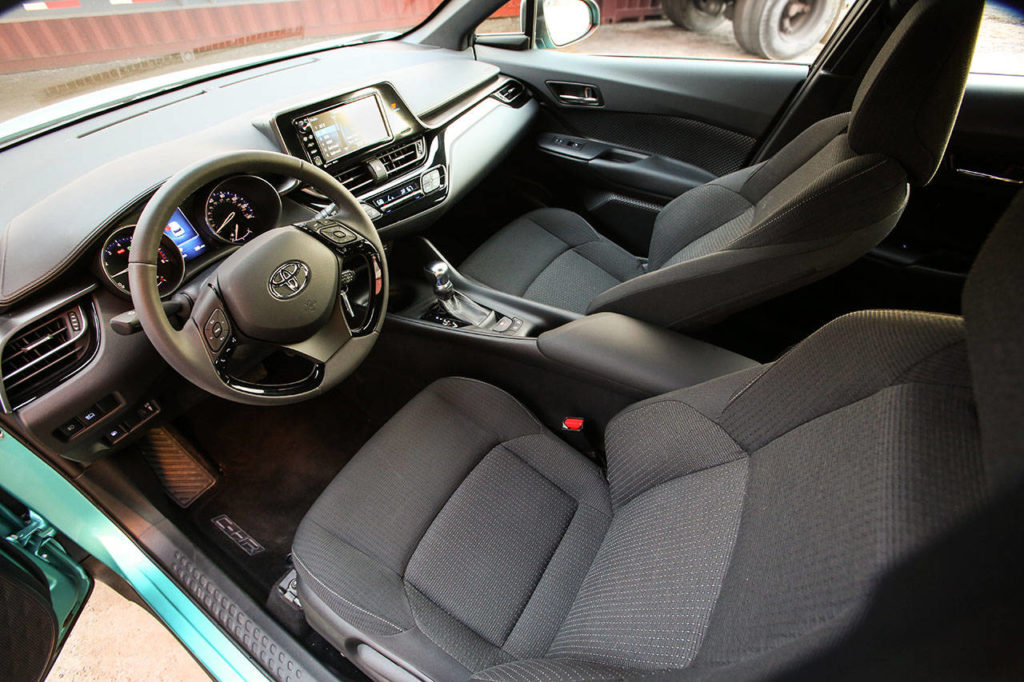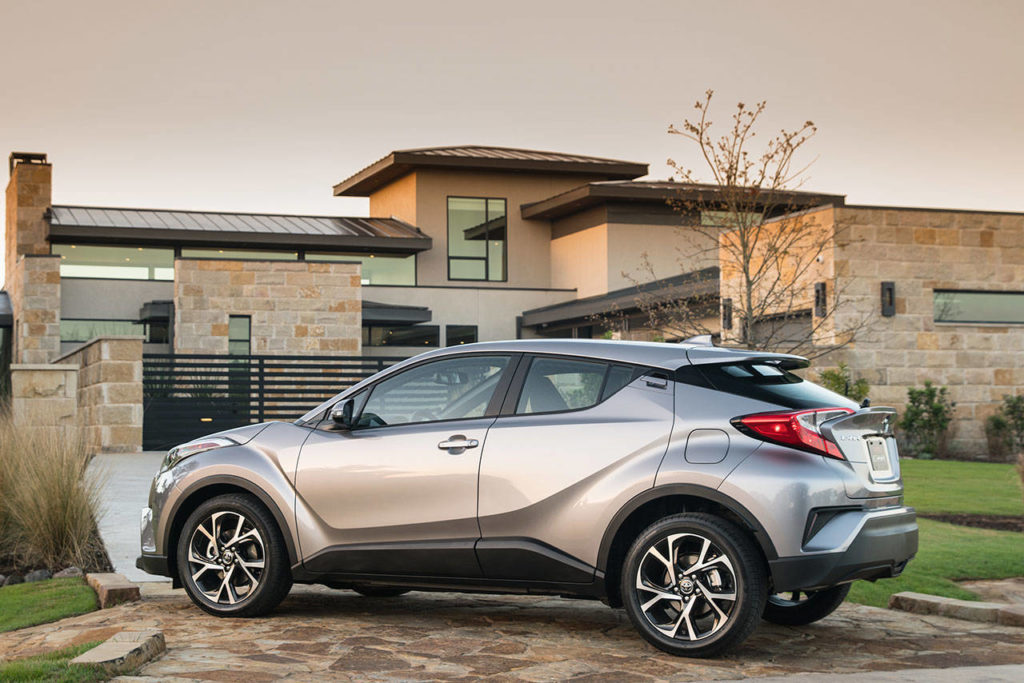Toyota’s 2018 C-HR is an all-new model for the brand. The letters stand for Coupe High-Rider, but if assigned to a recognized car market category, the C-HR is a subcompact crossover. Like an SUV, it rides higher than a car and has four doors and a hatch, but unlike an SUV it has wild styling and isn’t available with all-wheel drive.
C-HR’s second row door handles are camouflaged, located up near the roof to give the car a coupelike appearance. Users with manicured fingernails will appreciate that the handles work by grabbing, not lifting.
There are two C-HR trim levels: XLE and XLE Premium. Including the destination charge of $960, pricing starts at $23,460 for the XLE and $25,310 for the XLE premium.
The nicely-equipped XLE base model includes dual zone climate control, 7-inch audio display screen, tilt and telescoping steering wheel, front bucket seats, Bluetooth, dynamic radar cruise control, lane departure alert, 18-inch sport alloy wheels and Safety Sense, Toyota’s comprehensive group of safety equipment.
Additional features standard or available as options on the XLE Premium include color-matched front and rear passenger door handles with touch-sensor lock and unlock capability, integrated front fog lights, keyless entry with push button start, heated front seats with power lumbar adjustment for the driver, and power side mirrors with turn signals, blind spot warning indicators, puddle lights with “Toyota C-HR” projection, and auto-folding functionality.
Both versions come with a 144-horsepower four-cylinder engine with 139 lb-ft of torque, and a continuously variable transmission. Fuel economy ratings are 27 mpg city, 31 mpg highway, and 29 mpg combined.
My tester was an XLE Premium model.
The Toyota C-HR’s exterior design is undeniably striking, but in some ways that works against it because there’s an expectation of high performance. The four-cylinder engine is acceptable for city driving or freeway stop-and-go situations, or in the hands of drivers who don’t live for lively acceleration, but outside those parameters it is probably best described as lackluster. Fortunately, the C-HR doesn’t come up short on handling and I had considerable fun with it on the famed winding backroads of Snohomish County, and beyond.
Cabin space is generous for the front seats, cramped for rear seats — a completely expected arrangement in a subcompact. Little kids could fit fine in back. What the cabin lacks is smartphone integration including Apple CarPlay and Android Auto capability, and there is no navigation system available on the C-HR. This could be a deal breaker for tech-shaming car shoppers, or a cause for celebration for others.
Nineteen cubic feet of cargo space is available with second row seats in use, and 36.4 cubic feet with seats folded. They fold flat, a boon for cargo carrying. At the feed store, two 40-pound bags of black oil sunflower seeds and a 50-pound bag of cracked corn – a common haul for winter bird feeding – fit into my C-HR tester without a sweat, and there was still plenty of room left over.
2018 TOYOTA C-HR XLE PREMIUM
Base price, including destination charge: $25,310
Price as driven: $26,375
Mary Lowry is an independent automotive writer who lives in Snohomish County. She is a member of the Motor Press Guild, and a member and past president of the Northwest Automotive Press Association. Vehicles are provided by the manufacturers as a one-week loan for review purposes only. In no way do the manufacturers control the content of the reviews.
Talk to us
> Give us your news tips.
> Send us a letter to the editor.
> More Herald contact information.



























